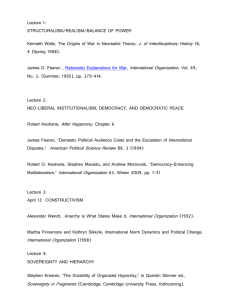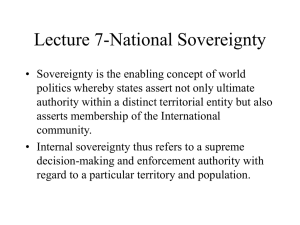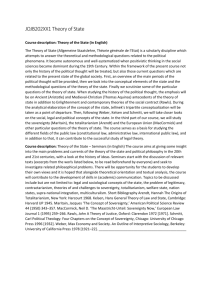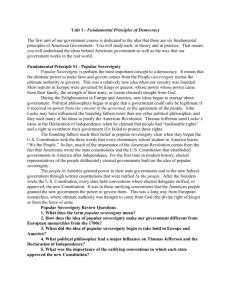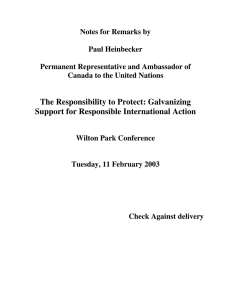The Legal aspects of humanitarian intervention
advertisement
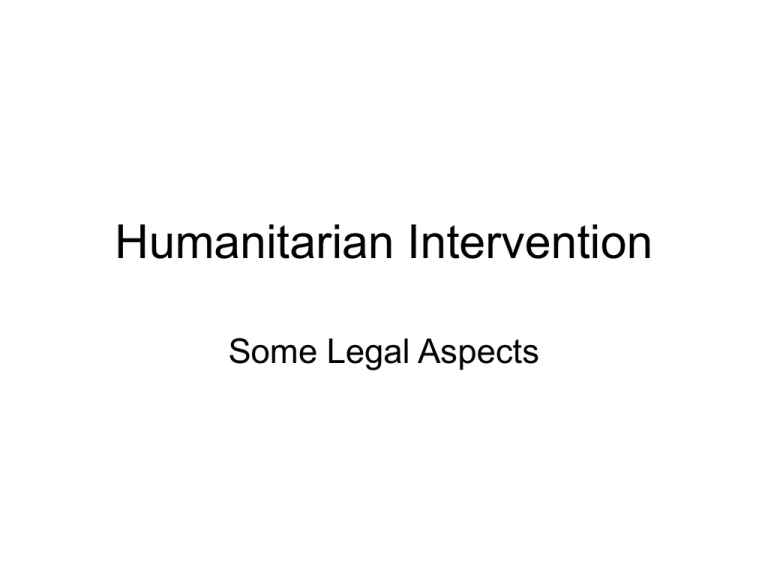
Humanitarian Intervention Some Legal Aspects Preamble • The Doctrine is new • Since 1990 escalation of confrontations raise new questions • New terminology invented, including the term “Humanitarian Intervention” The term • English “Intervention” = involvement • Russian “Интервенция” = military interference • For the report intervention - military interference of any martial agent out of the territory of the state it belongs, or involvement of any international armed perpetrators both without agreement of the subject state government or if the government does not actually exist The Dispute • Two parties : • Realists : Intervention without UN SC authorization is appropriate • Theorists : Intervention out of UN framework is illegal Realists’ Arguments • Primacy of human rights over sovereign equality principle. (disputable) • UN Security Council unfairness, unrepresentative membership and doublestandards Theorists’ Arguments • Intervention without UN Security Council is illegal. • “pacta sunt servanda” Legal aspect 1 • intervention is maintenance or restoration of international peace and security according to Article 42 of UN Charter. Or: • intervention – is self-defense under Article 51 of UN Charter Intervention vs Sovereignty • intervention as we consider it is an action of overcoming a state’s sovereignty. • Is anyone, except UN Security council is able to overcome a state’s sovereignty? Sovereignty • Sovereign equality of all UN members the first of the guiding principles for the UN and its members. It can be overcome in accordance with the appropriate procedure (art.41-50 of UN Charter). -Three types of sovereignty: -State sovereignty -People’s sovereignty -National sovereignty Legal aspect 2 (deduction) • People’s will is the only source of sovereignty. • State is always its manager. • If executing sovereignty against people’s interests, governor (government) should be removed. • If peoples for some reason are incapable to do it themselves, help is to be provided. The East Timor Intervention • On September 12, 1999 Indonesian government accepted the help of international community in the situation settlement. Then UN Security Council empowered establishing of multinational military forces lead by Australia. • After the burst of violence Indonesia removed its military and police powers. Governmental officials were recalled, and both Indonesia and Portugal accepted the transfer of control to UN. The East Timor Intervention • Operation in East Timor is faultless, considering the legal procedure of decision to intervene. The operation’s aim was establishing the government according to the will of East Timorese peoples revealed by plebiscite. Legally it can be considered as restoration of international peace and security according to Article 39 and realized in correspondence with 42 of UN Charter The Kosovo Intervention • On March 23 Secretary General of NATO required to start air force operations in former republic of Yugoslavia. • UN Security Council enforced the UN intervention in Kosovo only on June 10 1999. The Kosovo intervention • Legal nature of this intervention is ambiguous. • NATO’s proof for it’s legitimacy is that UNSC determined the situation in Kosovo as threat to international peace and security. • But none of both resolutions allowed NATO to intervene. Summary • Contemporary doctrine of humanitarian intervention is open to debate. Some scholars allow violation of international law, what is unlikely to be accepted by statute law advocates, but matches with emotions of apologists of precedent law. • However, the concept is imperfect. As we are living in a civilized community, a way of resolving problems (e.g. resolution of a respective body, such as UN International Court) should be found in order to establish primacy of law, not military power.


